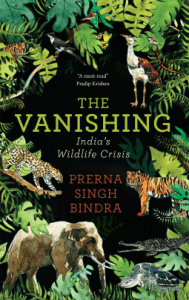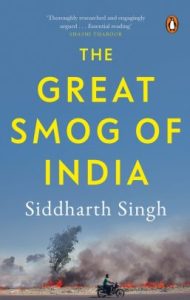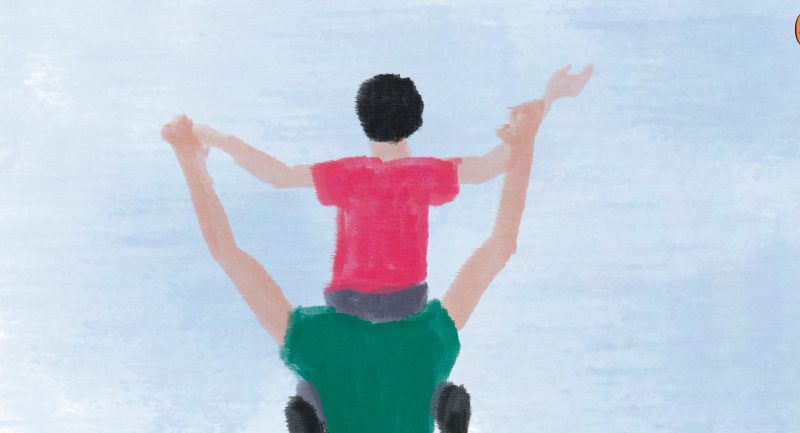
As society and our environment are being challenged in unprecedented ways today, we are using this occasion of World Environment Day to reconnect with nature and the need to preserve it in its various forms.
From discovering how to communicate with the trees, to introducing ourselves to a lovable but lonely tiger – here are some picks that we deem as essential reading in these times and especially on this day.
*
Hidden Life of Trees

In The Hidden Life of Trees, Peter Wohlleben shares his deep love of woods and forests and explains the amazing processes of life, death, and regeneration he has observed in the woodland and the amazing scientific mechanisms behind these wonders, of which we are blissfully unaware.
The Great Derangement

Amitav Ghosh, argues that future generations may well think so. How else can we explain our imaginative failure in the face of global warming? In this groundbreaking return to non-fiction, Ghosh examines our inability-at the level of literature, history and politics-to grasp the scale and violence of climate change. The climate crisis asks us to imagine other forms of human existence-a task to which fiction, Ghosh argues, is the best suited of all forms. The Great Derangement serves as a brilliant writer’s summons to confront the most urgent task of our time.
The Vanishing

The Vanishing takes an unflinching look at the unacknowledged crisis that India’s wildlife faces, bringing to fore the ecocide that the country’s growth story is leaving in its wake—laying to waste its forests, endangering its wildlife, even tigers whose increasing numbers shield the real story of how development projects are tearing their habitat to shreds. It tells us why extinction matters, linking the fate of wildlife to ours. The end of the gharial, an ancient crocodilian, signifies that the clear, fast-flowing rivers that are our lifelines are stilled and poisoned. The author deconstructs the raging human–wildlife conflict to show wild elephants as peaceable creatures and weaves a beautiful tale of their bond with their protectors.
The Great Smog of India

Air pollution kills over a million Indians every year, albeit silently. Families are thrown into a spiralling cycle of hospital visits, critically poor health and financial trouble impacting their productivity and ability to participate in the economy.
With clarity and compelling arguments, and with a dash of irony, Siddharth Singh demystifies the issue: where we are, how we got here, and what we can do now. He discusses not only developments in sectors like transport, industry and energy production that silently contribute to air pollution, but also the ‘agricultural shock’ to air quality triggered by crop burning in northern India every winter.
Cities and Canopies

Native and imported, sacred and ordinary, culinary and floral, favourites of various kings and commoners over the centuries, trees are the most visible signs of nature in cities, fundamentally shaping their identities. Trees are storehouses of the complex origins and histories of city growth, coming as they do from different parts of the world, brought in by various local and colonial rulers. Drawing on extensive research, Cities and Canopies is a book about both the specific and the general aspects of these gentle life-giving creatures.
Environmentalism: A Global History

Environmentalism: A Global History documents the flow of ideas across cultures, the ways in which the environmental movement in one country has been invigorated or transformed by infusions from outside. It interprets the different directions taken by different national traditions, and also explains why in certain contexts (such as the former Socialist Bloc) the green movement is marked only by its absence. Massive in scope but pointed in analysis, written with passion and verve, this book presents a comprehensive account of a significant social movement of our times, and will be of wide interest both within and outside the academy.
Indica

Did you know that the exquisite caves of Ellora were hewn from rock formed in the greatest lava floods the world has known—eruptions so enormous that they may well have obliterated dinosaurs? Or that Bengaluru owes its unique climate to a tectonic event that took place 88 million years ago? Many such amazing facts and discoveries—are a part of Indica: A Deep Natural History of the Indian Subcontinent.
Researching across wide-ranging scientific disciplines and travelling with scientists all over the country, biochemist Pranay Lal has woven together the first compelling narrative of India’s deep natural history, filled with fierce reptiles, fantastic dinosaurs, gargantuan mammals and amazing plants.
Gun Island

Bundook. Gun. A common word, but one which turns Deen Datta’s world upside down.
A dealer of rare books, Deen is used to a quiet life spent indoors, but as his once-solid beliefs begin to shift, he is forced to set out on an extraordinary journey; one that takes him from India to Los Angeles and Venice via a tangled route through the memories and experiences of those he meets along the way.
Gun Island is a beautifully realised novel about a climate and culture in crisis [source]. It deals with two of the most relevant issues of our times: climate change and human migration. [source]
Sacred Plants of India

Before temples were constructed, trees were open-air shrines sheltering the deity, and many were symbolic of the Buddha himself. Sacred Plants of India systematically lays out the sociocultural roots of the various plants found in the Indian subcontinent, while also asserting their ecological importance to our survival. Informative, thought-provoking and meticulously researched, this book draws on mythology and botany and the ancient religious traditions of India to assemble a detailed and fascinating account of India’s flora.
Conflicts of Interest

India’s foremost environmentalist Sunita Narain gives a personal account of her battles as part of the country’s green movement. While outlining the enormous environmental challenges that India faces today, Narain talks about how corporate lobbies and political interests often scuttle their effective resolution. She recounts some widely reported controversies triggered by research undertaken by her along with her team at the Centre for Science and Environment, such as a report on pesticides in colas, and a study on air pollution in Delhi, and includes a ringside view of global climate change negotiations.
Ecology and Equity
Ecology and Equity explores a society that is, in ecological terms, the most complex in the world. India’s people range from technocrats to hunter-gatherers and its environments from dense forest to wasteland. This book provides the first analytically sophisticated and empirically grounded study of environmental reform in the Third World. Radical both in its interpretation of the crisis in India and in its proposals for ecological reform, Ecology and Equity is essential reading for all concerned with the Third World development and/or the environmental debate.
Educate the young ones with these fun stories!
Ambushed

Gadget geek Tara (aka the Wii Wonder at school) braces herself for the dullest summer ever when her banker-turned-photographer father whisks her off to a sleepy tiger reserve in the Himalayan foothills, where Nothing Ever Happens. She couldn’t have been more wrong. A stroll through the woods sends Tara on an adventure of a lifetime, as she stumbles upon an international gang of poachers. In her debut novel, Nayanika Mahtani tackles the glaring issue of tiger poaching, while spinning a compelling story about man versus nature.
The Little Rainmaker

It’s the year 2027 and it’s been ten years since it last rained . . . anywhere in the world.
Ten-year-old Anoushqa has never seen rain and doesn’t believe in the stories that her grampa tells of rainbows, thunder and lightning. Until, one day, her life is turned upside down when her beloved grampa is on his deathbed and his last wish is to see rain! Thus Anoushqa sets out on a journey to make it rain. Will Anoushqa be able to fulfill Grampa’s dream after all? The Little Rainmaker is a story of hope, power and the fierce determination of a little girl in the face of an acute environmental crisis.
Wild in the Backyard

Wilderness and wildlife aren’t just confined to the forests; there is a whole lot of wild in our own backyards! Some of these critters are awake with you in the day. Others wake up when you go to bed…
Discover the hunters and the hunted, the diggers and the tunnellers, the raptors and the roaches, roaming around under our very noses.
The Secret Sanctuary

“Lost in the jungle… surrounded by wildlife and magic! Welcome to the Secret Sanctuary A magical jungle where laughing thrushes brush against your cheek and barking deer stop to be petted; an enchanting wilderness where you can tug a monkey’s tail or share a den with a mountain bear. Or go in search of a rare mountain quail. Or listen to a concert at dawn. Or walk through a spider’s web as if it wasn’t there. Or follow a blood trail through the jungle. This idyllic world is a natural paradise. There is only one catch. Once you enter, you may never be able to go back. ”
The Paradise Flycatcher

The Rose Garden’s beloved squirrel, Shikar-Snowdrop to young Mitalee-has vanished without a trace. No one can find him! Last seen in the company of a paradise flycatcher-a stunning bird with a long white tail-he has left no other trail. So, to save their friend, the loyal bird gang must fly to distant forests to track down the glamorous creature, who might just be able to help.
One Lonely Tiger

The rapidly shrinking forest has a lonesome, friendless tiger who is left with only his own shadow for company. Whom should he play with now that all his fellow tigers have disappeared?
In the tug-of-war over living space between people and the wild, where will the animals go if more forests are cut?
One Lonely Tiger illustrates this urgent threat of extinction and loss of habitat among valuable species, and asks the pressing question: are our trees, wild animals, birds and insects safe amidst us?
The Jungle Radio

When curious little Gul hears some strange sounds coming from her radio, she follows the musical clues into . . . an Indian jungle! On her walk, she finds feathered friends who TWEET, TAPP and TALK. There are some who howl and hoot, and others who play the flute. With a KEE here and a KAW there, Gul discovers songs everywhere!
The Jungle Radio is a little story about the language of birds-their songs and sounds-with a loud and clear call to listen to the world around us.
Team Penguin wishes you all safety and wellbeing in these times. Drop us a comment below to share your pick of the day!









